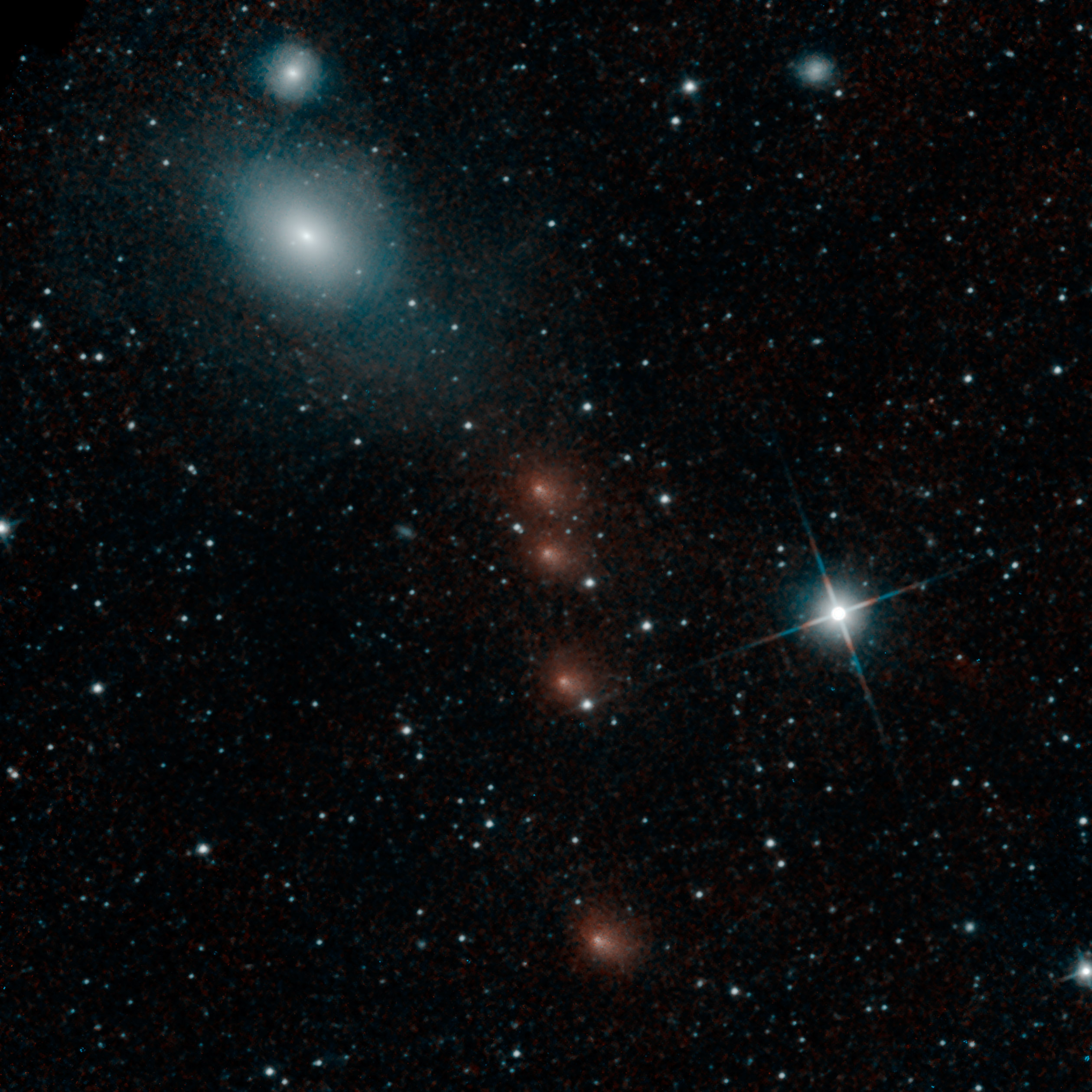|
4760 Jia-xiang
4760 Jia-xiang, provisional designation , is a background asteroid from the inner regions of the asteroid belt, approximately in diameter. It was discovered on 1 April 1981, by astronomers at Harvard University's Oak Ridge Observatory in Massachusetts, United States. The presumed stony S-type asteroid was named after Chinese astronomer Zhang Jiaxiang. It has a rotation period of 14.96 hours. Orbit and classification ''Jia-xiang'' is a non-family asteroid from the main belt's background population. It orbits the Sun in the inner main-belt at a distance of 2.0–2.6 AU once every 3 years and 7 months (1,296 days; semi-major axis of 2.33 AU). Its orbit has an eccentricity of 0.13 and an inclination of 10 ° with respect to the ecliptic. The body's observation arc begins with a precovery taken at Palomar Observatory in January 1955, or 26 years prior to its official discovery observation at Oak Ridge. Physical characteristics Rotation period In 2017, two rota ... [...More Info...] [...Related Items...] OR: [Wikipedia] [Google] [Baidu] |
Harvard College Observatory
The Harvard College Observatory (HCO) is an institution managing a complex of buildings and multiple instruments used for astronomical research by the Harvard University Department of Astronomy. It is located in Cambridge, Massachusetts, United States, and was founded in 1839. With the Smithsonian Astrophysical Observatory, it forms part of the Center for Astrophysics Harvard & Smithsonian. HCO houses the Harvard Plate Stacks, a collection of approximately 600,000 astronomical plates taken between the mid-1880s and 1989 (with a gap from 1953–1968). This 100-year coverage is a unique resource for studying temporal variations in the universe. The Digital Access to a Sky Century @ Harvard project scanned and 429,274 direct image plates, leaving nearly 200,000 spectra and other photographic plates yet to be digitized. In 2024, a new database, StarGlass, was created to combine the scientific data from the plates with the Plate Stack's archival holdings. History In 1839, the Ha ... [...More Info...] [...Related Items...] OR: [Wikipedia] [Google] [Baidu] |
Orbital Inclination
Orbital inclination measures the tilt of an object's orbit around a celestial body. It is expressed as the angle between a reference plane and the orbital plane or axis of direction of the orbiting object. For a satellite orbiting the Earth directly above the Equator, the plane of the satellite's orbit is the same as the Earth's equatorial plane, and the satellite's orbital inclination is 0°. The general case for a circular orbit is that it is tilted, spending half an orbit over the northern hemisphere and half over the southern. If the orbit swung between 20° north latitude and 20° south latitude, then its orbital inclination would be 20°. Orbits The inclination is one of the six orbital elements describing the shape and orientation of a celestial orbit. It is the angle between the orbital plane and the plane of reference, normally stated in degrees. For a satellite orbiting a planet, the plane of reference is usually the plane containing the planet's equator. For pla ... [...More Info...] [...Related Items...] OR: [Wikipedia] [Google] [Baidu] |
Astronomical Albedo
Albedo ( ; ) is the fraction of sunlight that is diffusely reflected by a body. It is measured on a scale from 0 (corresponding to a black body that absorbs all incident radiation) to 1 (corresponding to a body that reflects all incident radiation). ''Surface albedo'' is defined as the ratio of radiosity ''J''e to the irradiance ''E''e (flux per unit area) received by a surface. The proportion reflected is not only determined by properties of the surface itself, but also by the spectral and angular distribution of solar radiation reaching the Earth's surface. These factors vary with atmospheric composition, geographic location, and time (see position of the Sun). While directional-hemispherical reflectance factor is calculated for a single angle of incidence (i.e., for a given position of the Sun), albedo is the directional integration of reflectance over all solar angles in a given period. The temporal resolution may range from seconds (as obtained from flux measurements) to ... [...More Info...] [...Related Items...] OR: [Wikipedia] [Google] [Baidu] |
Wide-field Infrared Survey Explorer
Wide-field Infrared Survey Explorer (WISE, List of observatory codes, observatory code C51, Explorer 92 and MIDEX-6) was a NASA infrared astronomy Space observatory, space telescope in the Explorers Program launched in December 2009.. . WISE List of minor planet discoverers#WISE, discovered thousands of minor planets and numerous star clusters. Its observations also supported the discovery of the first Y dwarf, Y-type brown dwarf and Earth trojan, Earth trojan asteroid. ... . WISE performed an all-sky astronomical survey with images in 3.4, 4.6, 12 and 22 μm wavelength range bands, over ten months using a diameter infrared telescope in Geocentric orbit, Earth orbit. After its solid hydrogen coolant depleted, it was placed in Hibernation (spaceflight), hibernation mode in February 2011. In 2013, NASA reactivated the WISE telescope to search for near-Earth objects (NEO), such as comets and asteroids, that could collide with Earth. The reactivation mission was called Near-Eart ... [...More Info...] [...Related Items...] OR: [Wikipedia] [Google] [Baidu] |
NEOWISE
Wide-field Infrared Survey Explorer (WISE, observatory code C51, Explorer 92 and MIDEX-6) was a NASA infrared astronomy space telescope in the Explorers Program launched in December 2009.. . WISE discovered thousands of minor planets and numerous star clusters. Its observations also supported the discovery of the first Y-type brown dwarf and Earth trojan asteroid. ... . WISE performed an all-sky astronomical survey with images in 3.4, 4.6, 12 and 22 μm wavelength range bands, over ten months using a diameter infrared telescope in Earth orbit. After its solid hydrogen coolant depleted, it was placed in hibernation mode in February 2011. In 2013, NASA reactivated the WISE telescope to search for near-Earth objects (NEO), such as comets and asteroids, that could collide with Earth. The reactivation mission was called Near-Earth Object Wide-field Infrared Survey Explorer (NEOWISE). As of August 2023, NEOWISE was 40% through the 20th coverage of the full sky. Science o ... [...More Info...] [...Related Items...] OR: [Wikipedia] [Google] [Baidu] |
LCDB Quality Code
In astronomy, a light curve is a graph of the light intensity of a celestial object or region as a function of time, typically with the magnitude of light received on the ''y''-axis and with time on the ''x''-axis. The light is usually in a particular frequency interval or band. Light curves can be periodic, as in the case of eclipsing binaries, Cepheid variables, other periodic variables, and transiting extrasolar planets; or aperiodic, like the light curve of a nova, cataclysmic variable star, supernova, microlensing event, or binary as observed during occultation events. The study of a light curve and other observations can yield considerable information about the physical process that produces such a light curve, or constrain the physical theories about it. Variable stars Graphs of the apparent magnitude of a variable star over time are commonly used to visualise and analyse their behaviour. Although the categorisation of variable star types is increasingly ... [...More Info...] [...Related Items...] OR: [Wikipedia] [Google] [Baidu] |
Magnitude (astronomy)
In astronomy, magnitude is a measure of the brightness of an astronomical object, object, usually in a defined passband. An imprecise but systematic determination of the magnitude of objects was introduced in ancient times by Hipparchus. Magnitude values do not have a unit. The scale is Logarithmic scale, logarithmic and defined such that a magnitude 1 star is exactly 100 times brighter than a magnitude 6 star. Thus each step of one magnitude is \sqrt[5] \approx 2.512 times brighter than the magnitude 1 higher. The brighter an object appears, the lower the value of its magnitude, with the brightest objects reaching negative values. Astronomers use two different definitions of magnitude: apparent magnitude and absolute magnitude. The ''apparent'' magnitude () is the brightness of an object and depends on an object's intrinsic luminosity, its Cosmic distance ladder, distance, and the Extinction (astronomy), extinction reducing its brightness. The ''absolute'' magnitude () describes ... [...More Info...] [...Related Items...] OR: [Wikipedia] [Google] [Baidu] |
Ondřejov Observatory
The Ondřejov Observatory (; ) is the principal observatory of the Astronomical Institute of the Czech Academy of Sciences. It is located in the municipality of Ondřejov, southeast of Prague, Czech Republic. It has a wide telescope, which is the largest in the Czech Republic. History The facility was constructed in 1898, by Czech amateur astronomer and entrepreneur Josef Jan Frič as a private observatory. On 28 October 1928, he donated the facility to the Czechoslovak state to celebrate the tenth anniversary of its independence. The observatory, located at an altitude of , away from the air and light pollution of urban Prague, was administered by Charles University until the founding of the Czechoslovak Academy of Sciences in 1953, which from then on operated it as part of its Astronomical Institute in conjunction with other Czechoslovak observatories. In 1967, a telescope measuring in width was added to the observatory, which at that time was the 7th largest telescope i ... [...More Info...] [...Related Items...] OR: [Wikipedia] [Google] [Baidu] |
Petr Pravec
Petr Pravec (born September 17, 1967) is a Czech astronomer and a discoverer of minor planets, born in Třinec, Czech Republic. Pravec is a prolific discoverer of binary asteroids, expert in photometric observations and rotational lightcurves at Ondřejov Observatory. He is credited by the Minor Planet Center with the discovery and co-discovery of 350 numbered minor planets, and is leading the effort of a large consortium of stations called "BinAst" to look for multiplicity in the near-Earth objects and inner main-belt populations. He is a member of the ''Academy of Sciences of the Czech Republic''. The main-belt asteroid 4790 Petrpravec, discovered by Eleanor Helin Eleanor Francis "Glo" Helin (née Francis, 19 November 1932 – 25 January 2009) was an American astronomer. She was principal investigator of the Near-Earth Asteroid Tracking (NEAT) program of NASA's Jet Propulsion Laboratory. (Some sources gi ... in 1988, is named after him. The official naming citation wa ... [...More Info...] [...Related Items...] OR: [Wikipedia] [Google] [Baidu] |
Lightcurve
In astronomy, a light curve is a graph (discrete mathematics), graph of the Radiance, light intensity of a celestial object or region as a function of time, typically with the magnitude (astronomy), magnitude of light received on the ''y''-axis and with time on the ''x''-axis. The light is usually in a particular frequency interval or frequency band, band. Light curves can be periodic, as in the case of eclipsing binary, eclipsing binaries, Cepheid variables, other periodic variables, and Methods of detecting extrasolar planets#Transit photometry, transiting extrasolar planets; or aperiodic, like the light curve of a nova, cataclysmic variable star, supernova, gravitational microlensing, microlensing event, or binary as observed during occultation events. The study of a light curve and other observations can yield considerable information about the physical process that produces such a light curve, or constrain the physical theories about it. Variable stars Graphs of the ap ... [...More Info...] [...Related Items...] OR: [Wikipedia] [Google] [Baidu] |
Palomar Observatory
The Palomar Observatory is an astronomical research observatory in the Palomar Mountains of San Diego County, California, United States. It is owned and operated by the California Institute of Technology (Caltech). Research time at the observatory is granted to Caltech and its research partners, which include the Jet Propulsion Laboratory (JPL), Yale University, and the National Astronomical Observatories of China. The observatory operates several telescopes, including the Hale Telescope, the Samuel Oschin telescope (dedicated to the Zwicky Transient Facility, ZTF),) the Palomar Telescope, and the Gattini-IR telescope. Decommissioned instruments include the Palomar Testbed Interferometer and the first telescopes at the observatory, an Schmidt camera from 1936. History Hale's vision for large telescopes and Palomar Observatory Astronomer George Ellery Hale, whose vision created Palomar Observatory, built the world's largest telescope four times in succession. He ... [...More Info...] [...Related Items...] OR: [Wikipedia] [Google] [Baidu] |





